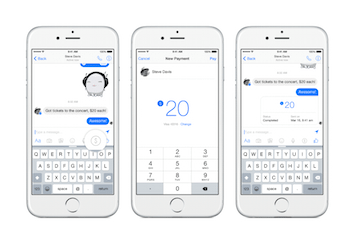
 Third parties will soon be able to produce content on Facebook's Messenger app, reports TechCrunch. The stand-alone app is expected to take center stage at next week's F8 developer conference, where Facebook will showcase recent changes to its messaging application.
Third parties will soon be able to produce content on Facebook's Messenger app, reports TechCrunch. The stand-alone app is expected to take center stage at next week's F8 developer conference, where Facebook will showcase recent changes to its messaging application.
Though not officially announced by Facebook, the report comes on the heels of the company’s development of a money-sending service that allows monetary transfers between users within the Messenger app.
These two new features are just the beginning for what Facebook hopes will be a new way for users to engage on mobile. Although other apps and services have provided these features in the past, never before have they been available in one place to an audience as large as Facebook’s. As of November 2014, Facebook reported that Messenger already has over 500 million users each month. Meanwhile, Messenger's closest rival, Snapchat, reaches nearly 200 million users per month.
The evolution of Messenger as a new kind of social network (though Asia’s messaging apps Line and WeChat already incorporate many of these functions) marks a shift away from public messaging in the digital space that began with the rise of Snapchat.
Here are five ways that Facebook’s Messenger could alter the way communicators think about and use mobile.
- Branded content giving users a one-on-one experience: Although it's uncertain what Messenger's third-party content will look like, it's likely we could see branded content, as with Snapchat's Discover feature, begin to appear on the platform.
- A direct connection between communications/advertising and sales: Facebook has already begun testing a "buy" button on its web and mobile platforms. With users' debit card information already stored on Messenger through the money transfer feature, we could see the "buy" button extended to branded content on Messenger.
- Customer interactions may get a facelift: Because Messenger is at its heart a text messaging app, companies can offer customers a more efficient and personal experience with everything from complaints to product questions.
- New ways to drive traffic: Content creators could leverage Messenger's system to push traffic outside the application by supplying users with links and incentives to move off the application and onto their own sites.
- Changing the mobile ecosystem: With Facebook and Messenger's enormous user base, personalized digital communications may reach a saturation point. Brands are already starting to get behind Snapchat, which began the move away from public platforms like Twitter. With Messenger already boasting double the users of Snapchat, this is something every communicator should keep an eye on.
